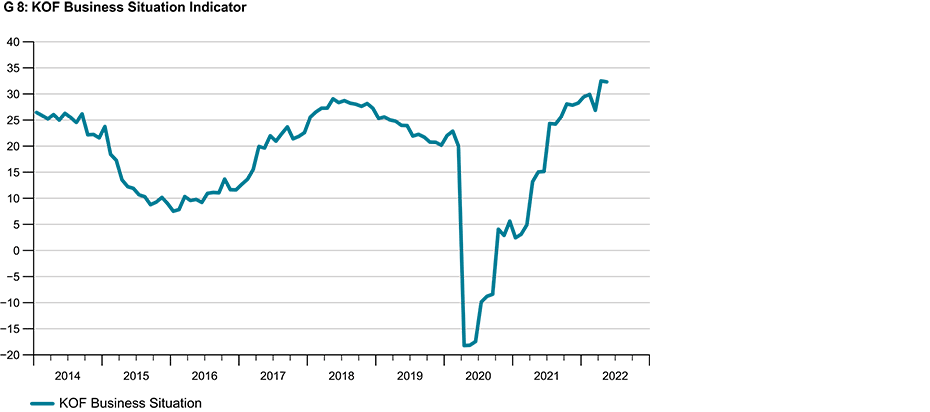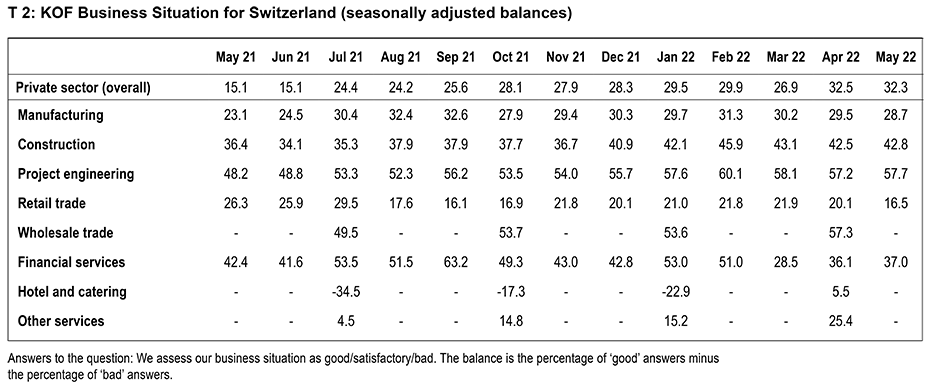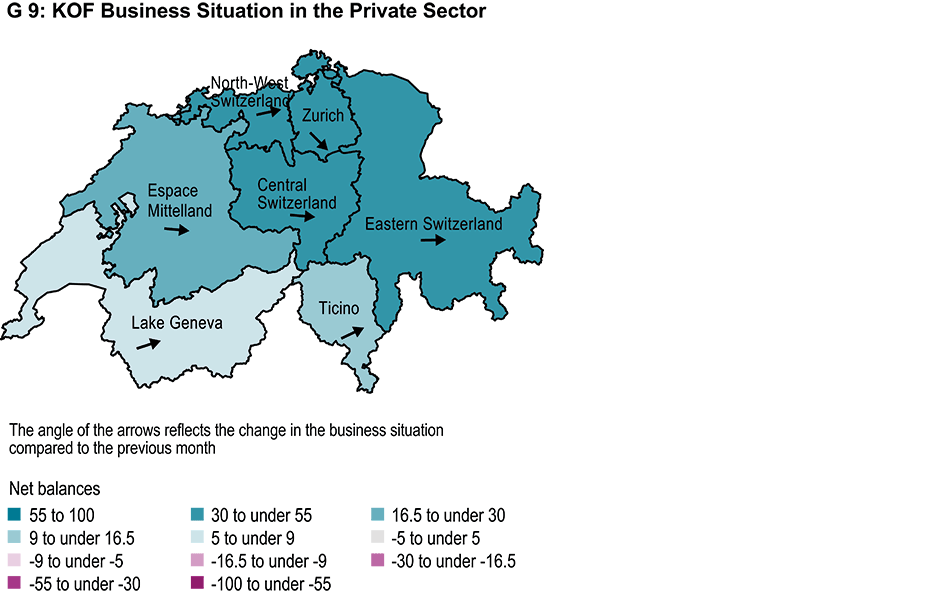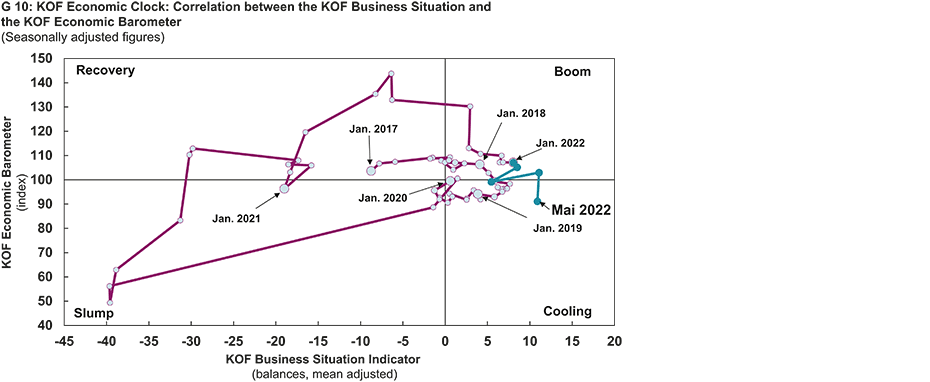KOF business situation remains buoyant
- KOF Business Situation Indicator
- Swiss Economy
- KOF Bulletin
After rising sharply in the previous month, the KOF Business Situation Indicator almost managed to maintain its high level in May, falling just slightly (see Chart G 8). Although companies’ business expectations for the near future are still well above average, they are no longer as optimistic as they were in the autumn of last year. The Swiss economy is in good shape, and its momentum is likely to slow in an orderly fashion.

With the exception of retail, all sectors surveyed in May showed only modest changes in their levels of business activity. A sharp downward correction can be seen in the retail industry. Although the upward price spiral in this sector is likely to continue, at least the tendency to raise prices here did not strengthen further in May. The Business Situation Indicator for manufacturing fell slightly for the second month in a row. Nevertheless, business in this sector is predominantly encouraging. Companies’ order books continue to be fairly full. The manufacturing sector is currently on course for a soft landing. The situation in financial and insurance services also improved slightly in May. The strong business activity in construction and project engineering remained virtually unchanged. However, hardly any further increases in construction output are planned for the near future. Wholesalers, hospitality and other service providers were last surveyed in April, when the business situation improved in all three sectors (see Table T 2).

The levels of business activity in Espace Mittelland, Northwestern Switzerland, Central Switzerland and Eastern Switzerland remained virtually unchanged in May. The situation in the Zurich region deteriorated, while in the Lake Geneva region and Ticino it improved.

The KOF Business Situation Indicator highlights companies’ current business situation. The KOF Economic Barometer, on the other hand, is an indicator of the economic outlook. The Business Cycle Clock shows that the economy was abruptly slowed by the pandemic in April 2020. After a rather disappointing start to 2021, the Swiss economy subsequently recovered. Although this recovery continued in the first few months of 2022, it has gradually subsided in the spring.

Explanation:
Chart G 8 shows the KOF Business Situation Indicator across all sectors included in the survey. The business situation of sectors that are only surveyed quarterly is kept constant in the interim months.
Chart G 9 shows the business situation in the main regions as defined by the Swiss Federal Statistical Office. The regions are coloured differently to reflect their business situation. The arrows within the regions indicate the change in the situation compared with the previous month. An upward-pointing arrow indicates that the situation has improved compared with the previous month.
The Business Situation Indicator in the KOF Business Cycle Clock (Chart G 10) is plotted against the KOF Economic Barometer. The indicator reflects the current business situation, while the barometer is a leading indicator of changes in activity. The clock can be divided into quadrants. During the recovery phase the business situation is below average but growth prospects are above average. At the peak of the economic cycle the situation and prospects are both above average. During the slowdown phase the situation is above average and the prospects are below average. At the bottom of the economic cycle the situation and outlook are both below average. Ideally the chart runs through the quadrants in a clockwise direction.
The KOF Business Situation Indicator is based on more than 4,500 reports from firms in Switzerland. Companies in industry, the retail sector, construction, project engineering and financial services and insurance are surveyed monthly. Businesses in the hospitality, wholesale and other services sectors are surveyed during the first month of each quarter. These firms are asked, among other things, to assess their current business situation. They can rate their situation as either ‘good’, ‘satisfactory’ or ‘poor’. The net balance of their current business situation is the difference between the percentages of ‘good’ and ‘poor’ responses.
Klick here for further information on our Website.
Kontakt
KOF Konjunkturforschungsstelle
Leonhardstrasse 21
8092
Zürich
Switzerland
